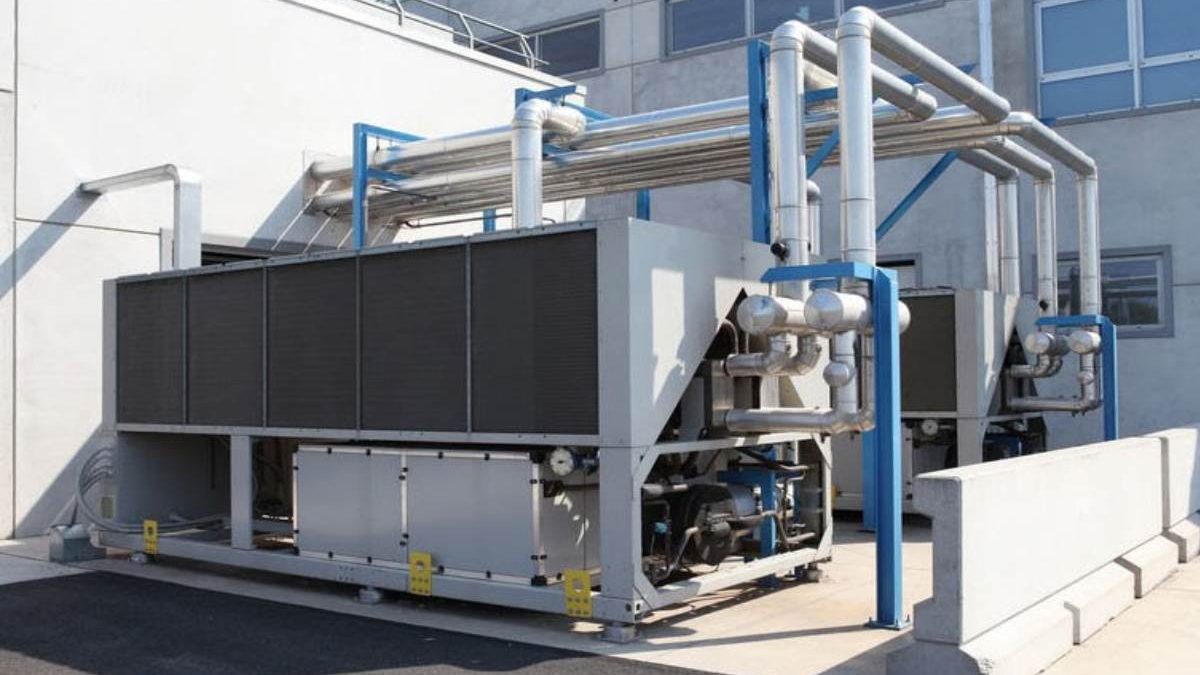Understanding the glossary terms associated with commercial HVAC systems is crucial for business owners who want to maximize their investment. HVAC systems are vital in maintaining a comfortable and efficient indoor environment for commercial spaces. Commercial HVAC (Heating, Ventilation, and Air Conditioning) refers to specialized systems and equipment designed to provide commercial or business heating, cooling, and ventilation solutions.
It involves the installation, maintenance, and repair of HVAC systems tailored to meet the specific needs of larger buildings, such as offices, retail stores, hospitals, schools, and hotels. Commercial HVAC systems are typically more complex and robust than residential systems, with the capacity to handle larger spaces and higher occupant loads. They play a critical role in creating a comfortable and healthy indoor environment while ensuring energy efficiency and cost-effectiveness for businesses.
Here are reasons why understanding commercial HVAC glossary matters:
Table of Contents
Informed Decision-Making
Understanding HVAC glossary terms allows business owners to make educated decisions regarding their HVAC systems. Terms like SEER (Seasonal Energy Efficiency Ratio), AFUE (Annual Fuel Utilization Efficiency), and HVAC load calculation help select the right equipment for optimal energy efficiency and performance. With this knowledge, business owners can invest in the most suitable HVAC solutions that align with their specific needs, resulting in long-term cost savings and improved comfort.
Effective Communication
Clear and effective communication with HVAC professionals is crucial throughout the installation, maintenance, and repair. Familiarity with HVAC glossary terms enables business owners to articulate their requirements, understand recommendations from HVAC experts, and engage in productive discussions. This facilitates collaboration, minimizes misunderstandings, and ensures that the HVAC system is tailored to the business’s specific needs.
Energy Efficiency and Cost Savings
Commercial HVAC systems account for a significant portion of a business’s energy consumption. Understanding terms like SEER, AFUE, and energy recovery ventilation (ERV) empowers business owners to select energy-efficient equipment and implement energy-saving strategies. By optimizing energy efficiency, businesses can significantly reduce energy costs over time, resulting in substantial savings and a positive impact on the bottom line.
System Performance and Comfort
A well-functioning HVAC system directly contributes to the comfort and productivity of employees and the satisfaction of customers. Familiarity with glossary terms such as ductwork, air handlers, zoning, and indoor air quality (IAQ) allows business owners to optimize system performance. They can collaborate with HVAC professionals to ensure proper airflow, temperature control, humidity management, and indoor air quality. This leads to enhanced comfort, better productivity, and improved customer experiences.
Maintenance and Longevity
Proper maintenance is vital for the longevity and efficient operation of HVAC systems. Understanding glossary terms related to maintenance, such as preventive maintenance, coil cleaning, and filter replacements, allows business owners to implement effective maintenance schedules. Regular maintenance helps prevent costly breakdowns, ensures optimal system performance, and extends the lifespan of the HVAC equipment. Business owners can protect their investments by adhering to maintenance best practices and avoiding expensive repairs or premature replacements.
Wrapping Up
Understanding the glossary terms associated with commercial HVAC systems is essential for business owners looking to maximize their investment. By making informed decisions, effectively communicating with HVAC professionals, implementing energy-efficient strategies, optimizing system performance, and prioritizing maintenance, business owners can enhance comfort, reduce operational costs, and extend the lifespan of their HVAC systems. It protects their investment and contributes to a productive, comfortable, and energy-efficient commercial environment.

